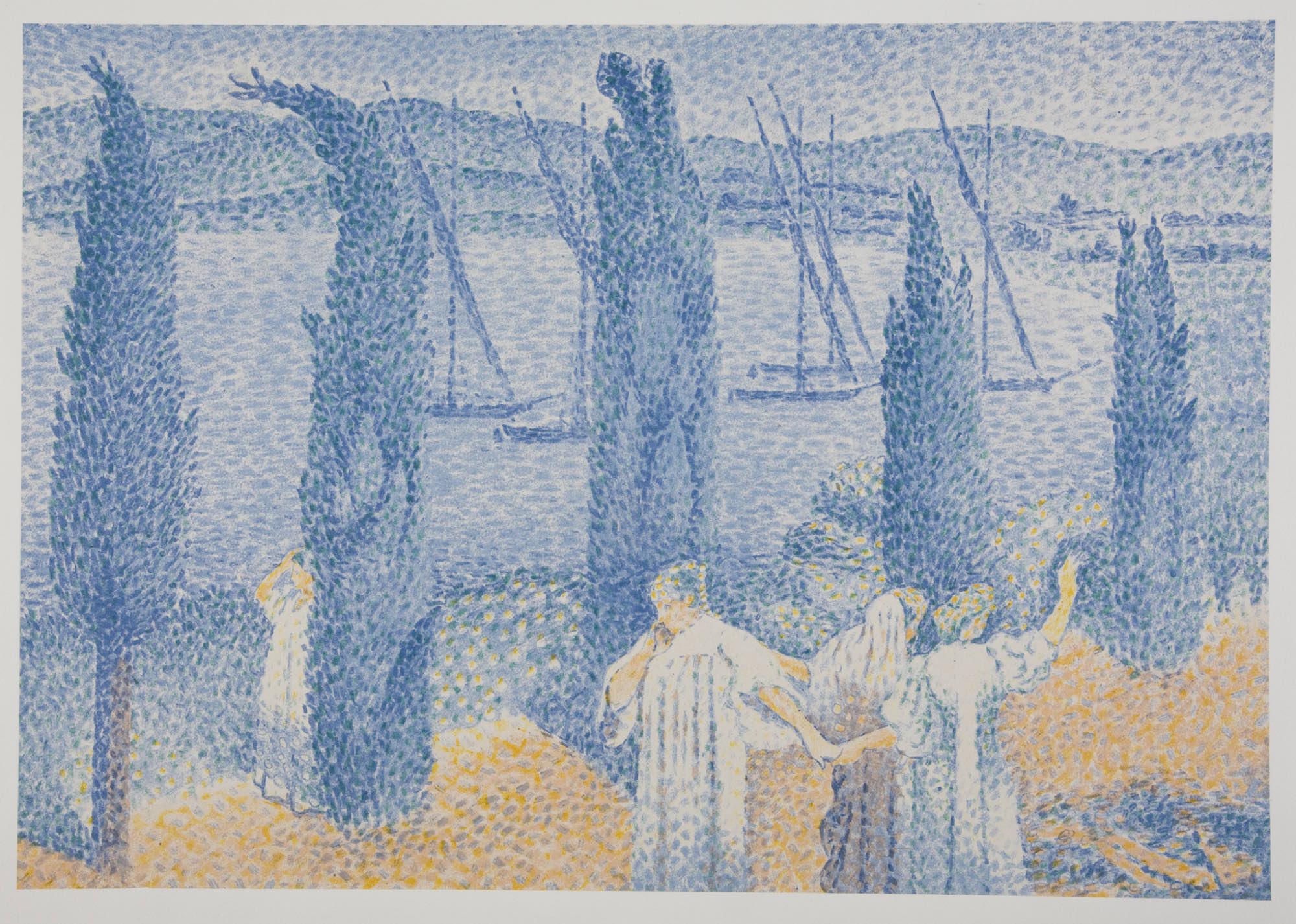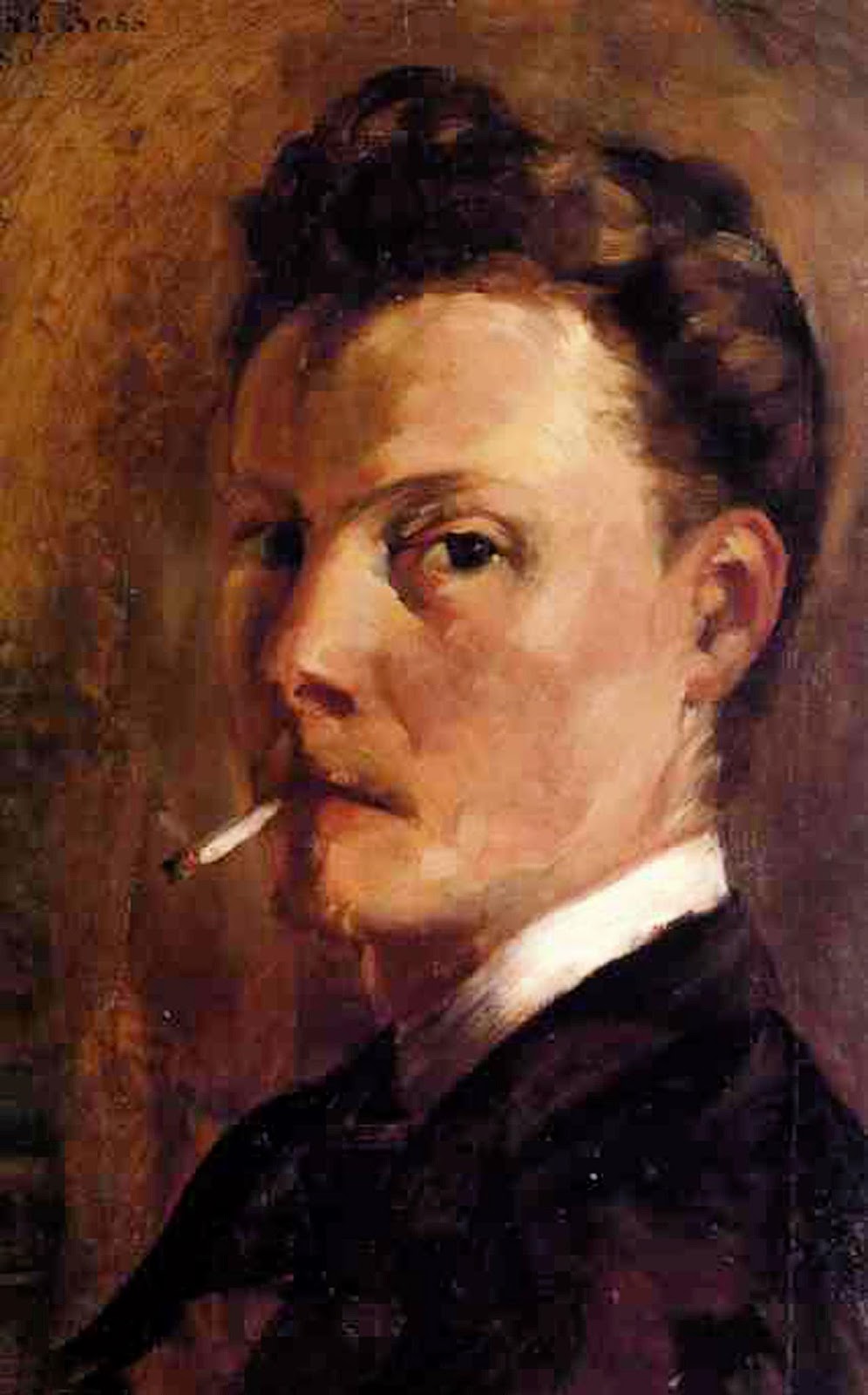Previously on Saturdays we presented prints from the late 19th and early 20th century from the collection of the National Museum of Krakow (Poland). This is today's beautiful litography: Stroll - Cypresses depicts a group of women who are standing, or rather leisurely strolling, by the river. Its banks are lined with rhythmically planted poplars, behind which we can see sailboats floating on the river. In the distance there are low hills rising over the opposite bank. The depiction is dominated by various shades of blue; only the strip of grass or sand in the foreground stands out with its yellows and browns. The entire scene radiates orderliness, peace, and a certain harmony. No impulses of movement or life can reach us. We get the impression that the time has stopped and frozen. The wind seems to have permanently set on the water’s surface and among the leaves of shrubs and trees, and that the scene continues somewhat timelessly. This is one of two colour lithographs made by Henri-Edmond Cross following the principles of the pointillist technique, which involves composing images by applying small, precisely and densely spaced dots of colour. In this detailed, monotonous technique, there was no room for randomness, or instinctive, dynamic painting strokes. However, these dots – when viewed from a certain distance – blended together, forming a vibrating surface and a clear, bright aura. The atmosphere of pointillist works is very unique, poetic, and other-worldly. Henri-Edmond Cross was a French painter, printmaker, sculptor, who also created ceramic and glass products. In 1884 he co-founded the Salon des Indépendants in Paris, where he met future Neo-Impressionists (including Georges Seurat and Paul Signac) who inspired him to apply the pointillist technique.
Have a relaxing weekend!


 Henri-Edmond Cross
Henri-Edmond Cross